HMS Gloucester Carried a Future King and Some Wine
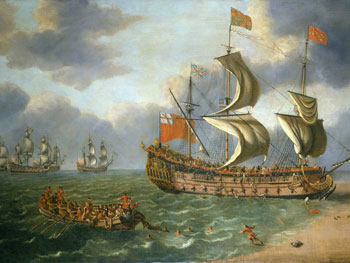
When the HMS Gloucester sank off Yarmouth, it lost many passengers and crew. Credit: Painting by Johan Danckerts
What happens when your bubble gets burst while researching an ancient shipwreck? “You’ll just have to find another bubble,” quipped a diver who appeared a bit envious of the discovery and successful salvage of a British warship that sank in 1682. Case in point: In 2007, brothers Julian and Lincoln Barnwell of Norfolk, England, found the warship HMS Gloucester—traveling from Southern England to Scotland—sunk off the coast of Great Yarmouth. After running aground on a notoriously dangerous sandbank, it went down in 150 feet of water where it remained undisturbed for over 300 years.
Let’s say the adventurous brothers, who searched for four years in the North Sea, were a bit disappointed when they learned the fate of a famous passenger who survived the sinking. However, this became a moot point when serendipity kicked in and they made another discovery on top of the original one. First, let’s explain the famous person and his fate.
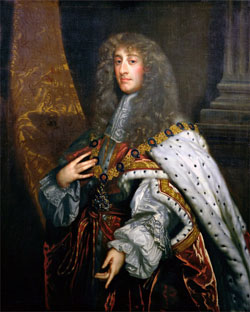
King James II inherited the throne when he was the Duke of York. Crédit: World History Encyclopedia
James Stuart, the Duke of York, was a passenger bound for Scotland where he had business pending. When the ship foundered, the duke performed a heroic deed when he helped others into a lifeboat before the majestic warship sank. There was no manifest to determine the number of passengers aboard or the ship’s cargo, but estimates revealed that more than 130 passengers and crew were lost in the disaster. The duke went about his business for three years when his life suddenly changed. King Charles II died at age 54 and his brother, James Stuart, succeeded him. Ironically, he was a duke one afternoon and a king the next morning. After he was crowned King James II of England and Ireland and James VII of Scotland, he reigned over all these regions from 1685 to 1688.
So what was the bubble that burst hundreds of years later? At first the brothers bragged about finding a shipwreck that had a future English monarch aboard. But they soon found out what a respected historian disclosed: “Stuart was a decent duke but a lousy king who was inevitably deposed. He started out favorably in ruling the realm, but didn’t know how to handle Parliament. He became known as the “Loser King” who wasn’t raised to handle the job.” King James was an ardent Catholic in a Protestant majority country trying to deal with the Church of England’s Anglican crowd. When James tried to pass some acts (laws) or dismiss other ones, a solid segment of Parliament voted them down. The king went down in the history books as a deposed monarch in what was tagged the “Glorious Revolution.”
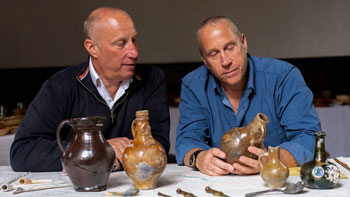
The Barnwell Brothers discovered the wreck and found the ship’s bell. Credit: Un. of East Anglia
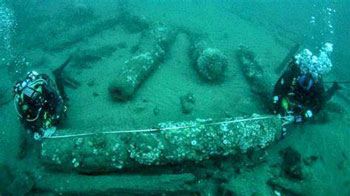
Divers measure cannons and other artifacts lost in the sand. Credit: Maritime Archaeology Trust
Many historians believe the Glorious Revolution was one of the important events leading to Britain’s transformation from an absolute monarchy to a constitutional one. After the revolution, the English monarchy would never hold supreme power again. The uprising and deposition of the king also had an impact on America’s 13 colonies. The colonists were temporarily freed of strict anti-Puritan laws after King James was gone.
As mentioned, the brothers Barnwell were disappointed when the vanquished ruler didn’t leave them any bragging rights. Yet, always optimistic, the adventuresome duo still had wind in their sails and made one more dig in the sand. That’s when their “Eureka!” moment emerged. The ship was split down the keel with its hull mostly buried in the sand. Lots of artifacts were found using an airlift that pumped sand away and revealed the finds. The bell was the most important one since it identified the vessel. Cannons, small arms, rigging, fittings, spectacles, shoes, the mouthpiece for a bugle and a small, portable glass urinal (fit for a duke) for nighttime relief were just a few of the many effects retrieved during dozens of dives.

One of the wine bottles found buried in the sand. A variety of Royal seals were on the bottles. Credit: Norfolk Historical shipwrecks, Ltd.
Time passed and later, delving deeper in the sand, the divers found a couple of unopened bottles of wine. Next, they found a couple more and still more and more until—over a sequence of dives—340 bottles were retrieved, all with seals of different royal families on them.
What’s the first question people ask? No, it was NOT drinkable. Many wine lovers romanticize the idea of keeping an extra special bottle of wine for a suitable occasion. But when the big day arrives, the bottle they’ve been hoarding is spoiled and undrinkable. Wines that aren’t consumed in a reasonable amount of time starts to decline in quality. It can fade in color and take on a sour taste as well. Often, when a bottle of wine this old is opened, the smell of damp cardboard or a rain-soaked dog fills the room making it not even tempting to sample. But that didn’t matter at auctions. To own a bottle of unopened 300-plus year old wine from a ship transporting the future king of England (even if he was a “lousy” leader) was irresistible for collectors. At auction, they started at $10,000 each and went as high as $50,000 for a single bottle of vintage, fermented grape juice.
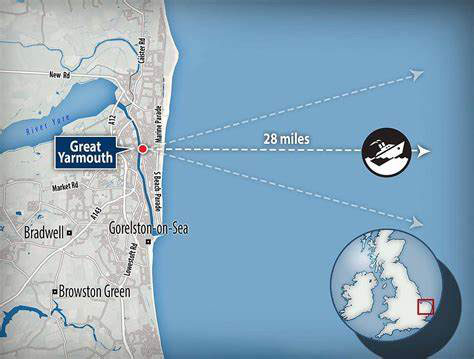
Map shows where the HMS Gloucester sank. Credit: Norfolk Historical Shipwrecks, Ltd.
Looking back, as maritime authority Professor Claire Jowitt recapped, “Due to the circumstances surrounding the sinking, this can be viewed as the single most significant historic maritime discovery since the Mary Rose in 1971. (Tudor period English flagship excavated and raised). The HMS Gloucester doubtlessly helped us understand some of the fascinating 17th century social, maritime and political history.”
NOTE: Artifacts from the HMS Gloucester and other shipwrecks are on display at the Norwich Castle and Art Gallery, Norwich County, UK. Go to Norwich Castle Museum on Google and see many articles.
Author: Ellsworth Boyd
Ellsworth Boyd, Professor Emeritus, College of Education, Towson University, Towson, Maryland, pursues an avocation of diving and writing. He has published articles and photo’s in every major dive magazine in the US., Canada, and half a dozen foreign countries. An authority on shipwrecks, Ellsworth has received thousands of letters and e-mails from divers throughout the world who responded to his Wreck Facts column in Sport Diver Magazine. When he’s not writing, or diving, Ellsworth appears as a featured speaker at maritime symposiums in Los Angeles, Houston, Chicago, Ft. Lauderdale, New York and Philadelphia. “Romance & Mystery: Sunken Treasures of the Lost Galleons,” is one of his most popular talks. A pioneer in the sport, Ellsworth was inducted into the International Legends of Diving in 2013.
3 Comments
Submit a Comment
All Rights Reserved © | National Underwater and Marine Agency
All Rights Reserved © | National Underwater and Marine Agency
Web Design by Floyd Dog Design
Web Design by Floyd Dog Design

Dear Els… I congratulate you on your continued writing of these amazing and interesting articles. It never ceases to amaze me your avocation for the sport and your dedication to research writing. I thank God for having brought you into my life many years ago. Hope you’re doing well and we’ll talk soon. With love, Manny
Thank you Manny. This is a wonderful tribute and I cherish it. We’ve been friends for many years and I have enjoyed your company immensely. We came into each other’s lives as far back as 1969 and both of us so appreciative of it. We shall continue our strong friendship. Best regards, Ells (Ellsworth Boyd)
This is a thrilling website! I’m so glad I discovered it while reading POSEIDON’S ARROW by Clive and Dirk Cussler. The Cusslers are my latest favorite authors and I’ve been doing lots of reading recently due to broken vertebrae in my back. (Talk about “downtime!”)
Do you have any articles by and/or about the authors and their roles, initial interests, etc., in NUMA? Should anyone interview them, I’d be curious about their interest in shipwrecks and their choice of residing in Arizona. Somehow those two subjects seem contrary! Maybe they need time to dry out?